Fishes
Media
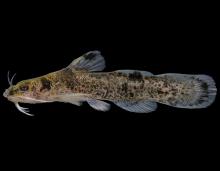
Species Types
Scientific Name
Noturus miurus
Description
The brindled madtom inhabits many of the same lowland streams and ditches as the tadpole madtom, and is nearly as common. Brindled madtoms are more often found in pools, however. The species also inhabits the Spring River system in southwest Missouri.
Media

Species Types
Scientific Name
Noturus flavater
Description
The checkered madtom is a small catfish prominently marked with four dark saddle marks and a bold dark bar at the base of the tail fin. It occurs in the southern Ozarks.
Media
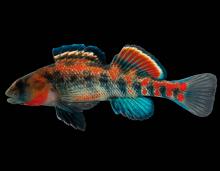
Species Types
Scientific Name
Etheostoma, Percina, Ammocrypta, and Crystallaria spp.
Description
Darters have been described as the hummingbirds of the fish world: colorful, small, and quick. Missouri has about 44 different types of darters. They are most diverse in the fast, clear, rocky streams of the Ozarks.
Media
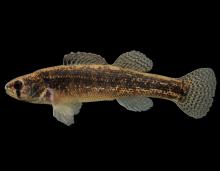
Species Types
Scientific Name
Etheostoma parvipinne
Description
The endangered goldstripe darter needs small, shallow, shaded, spring-fed streams with clear water and a low to moderate gradient. It occurs in only a few locations in southeastern Missouri.
Media

Species Types
Scientific Name
Percina nasuta
Description
The longnose darter is slender, with a series of 10 to 15 small, indistinct, dark blotches or bars along the midside. It is endangered in Missouri, today known only from the St. Francis River and Lake Wappapello. Historically, it occurred in the White River.
Media

Species Types
Scientific Name
Pimephales promelas
Description
The fathead minnow has a blunt, rounded snout, rounded fins, a dusky stripe along the side, and a spot at the base of the tail fin. It is most abundant in pools of small prairie creeks because it tolerates rather high temperatures, extreme turbidity, and low oxygen.
Media
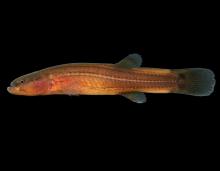
Species Types
Scientific Name
Forbesichthys agassizi
Description
The spring cavefish is the only cavefish in our state that has eyes, however small, and whose body is yellowish brown or brown; our other cavefishes lack eyes entirely and are pale and nearly colorless.
Media

Species Types
Scientific Name
Ichthyomyzon fossor
Description
The northern brook lamprey is a great example of a nonparasitic lamprey. While lampreys as a group are famous for being fish parasites, brook lampreys are essentially bottom feeders.
Media
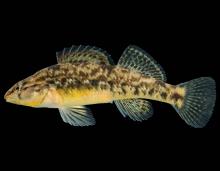
Species Types
Scientific Name
Etheostoma caeruleum
Description
The rainbow darter is a common and characteristic darter in the Ozarks. Where it occurs in our state, it is the most abundant darter in most streams of all sizes. Breeding males are brilliantly colored with reddish orange red and greenish blue.
Media
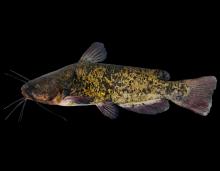
Species Types
Scientific Name
Ameiurus nebulosus
Description
In Missouri, the brown bullhead occurs in quiet, clear waters in wildlife refuges in southeast Missouri. Elsewhere in the state, it is stocked and possibly escapes. It has mottled sides and an elongated barbel at the corner of the mouth.
See Also


Media

Species Types
Scientific Name
Amphiuma tridactylum
Description
The three-toed amphiuma is an eel-like, completely aquatic salamander. It has very small forelimbs and hind limbs, each with three tiny toes. In Missouri it’s found only in the Bootheel region.
Media

Species Types
Scientific Name
Siren intermedia nettingi
Description
The western lesser siren is an eel-like, aquatic salamander with external gills, small eyes, small forelimbs with four toes, and no hind limbs. In Missouri, it’s found mostly in the Bootheel and northward in counties near the Mississippi River.
About Fishes in Missouri
Missouri has more than 200 kinds of fish, more than are found in most neighboring states. Fishes live in water, breathe with gills, and have fins instead of legs. Most are covered with scales. Most fish in Missouri “look” like fish and could never be confused with anything else. True, lampreys and eels have snakelike bodies — but they also have fins and smooth, slimy skin, which snakes do not.





















